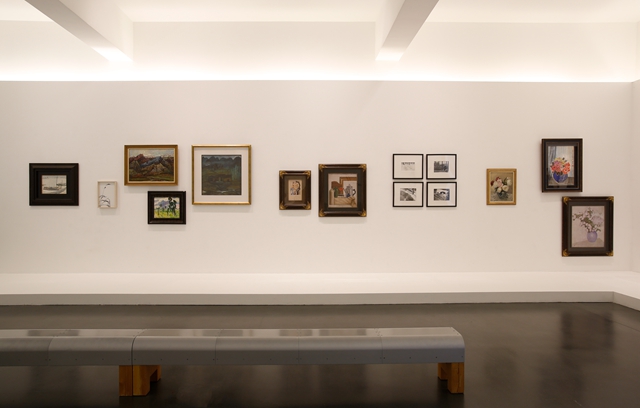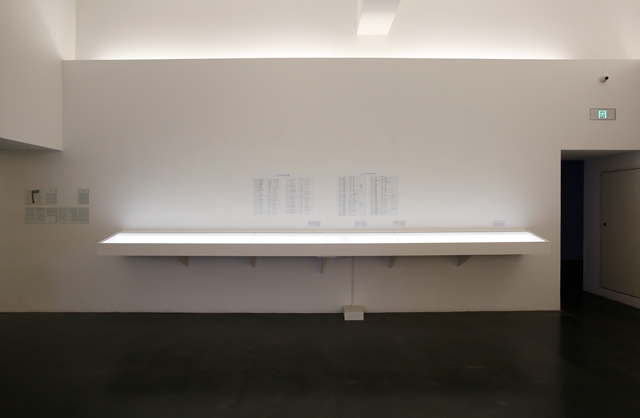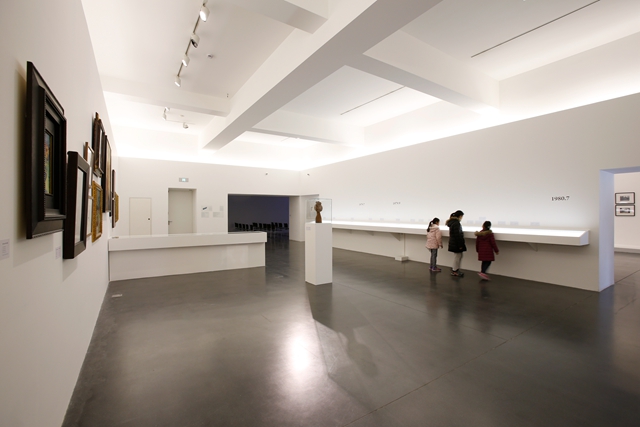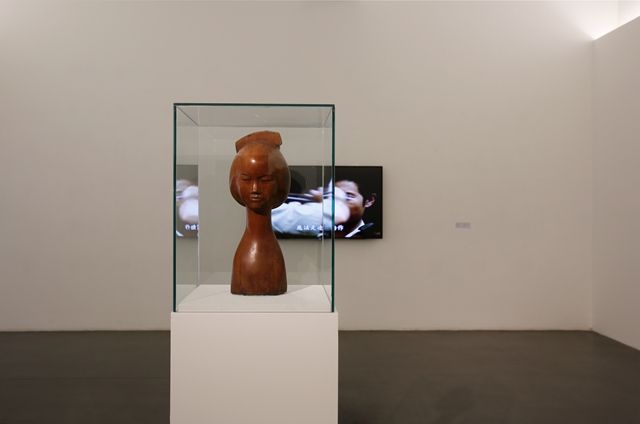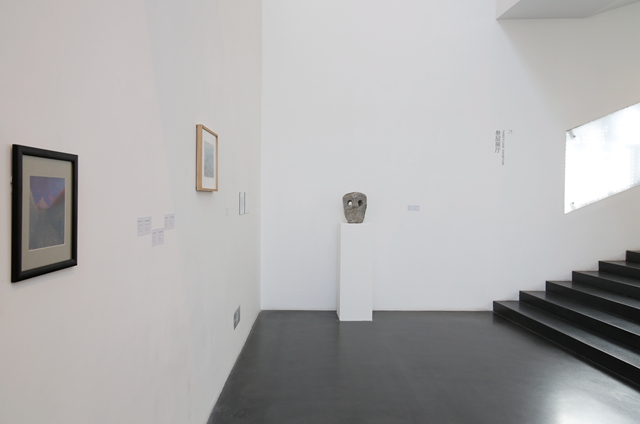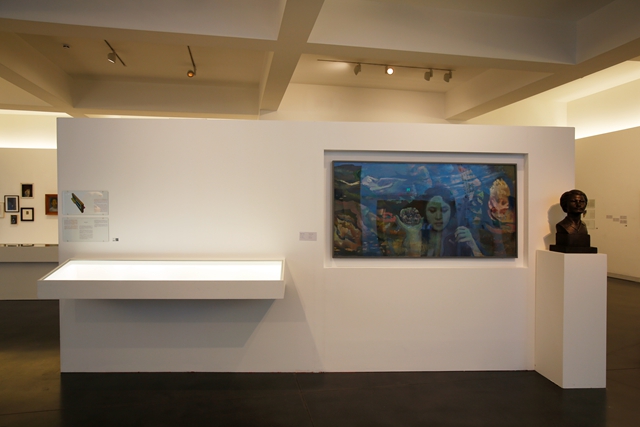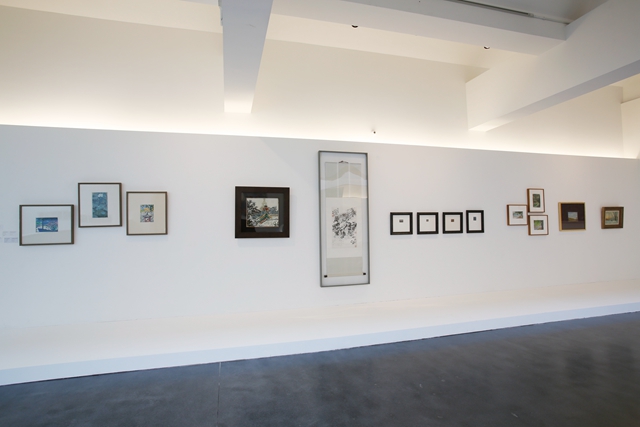
Salon, Salon: Fine Art Practices from 1972 to 1982 in Profile – A Beijing Perspective
2017.1.8 – 5.7
Curators: Liu Ding, Carol Yinghua Lu
Inside-Out Art Museum, No.50 Xingshikou Road, Haidian District, Beijing
Salon, Salon: Fine Art Practices from 1972 to 1982 in Profile – A Beijing Perspective is the third exhibition of From the Issue of Art to the Issue of Position: The Legacy of Socialist Realism in Chinese contemporary art, a research project initiated by artist Liu Ding and art critic Carol Yinghua Lu. This ongoing research examines the historical narratives and ideological construct of Chinese contemporary art in a timeframe of 67 years since 1949.
Salon, Salon focuses on a ten-year period from the year of 1972 after Lin Biao’s botched coup against Mao and airplane crash in 1971 to the year of 1982, marked by The Summary of the Fifth National Trial Conference on the “Two Cases” approved and issued by the Central Government. We consider this decade not only as a critical transition in China’s political history, but also as a relatively cohesive artistic period. By studying the detailed features and multi-layered fine art practices within this period, we reconsider the mentality and approaches of artists in a period of dramatic political changes and the issue of judgments in existing historical narratives of art.
This exhibition inquires into the artistic practices of three generations of artists, mainly active in Beijing, within this ten-year period. Specifically, we zoom in to study the Beijing Oil Painting Society (including the “Spring Festival Oil Painting Exhibition” preceding its formation), the No Name Group, the Stars, Friday Salon, April Photo Society, Men of the Same Generation (the Contemporaries Group), and a small number of artists. These were artist initiatives and individual members emerging in the late 1970s, involving three generations of artists of varied educational backgrounds and statuses including: 1) Painters trained before the Liberation War (1945-1949); 2) Painters trained after the founding of People’s Republic of China (1949) and before the Cultural Revolution (1966-1976); 3) Amateurish painters appearing before and during the Cultural Revolution; 4) Young artists, writers and poets who graduated and became active in the late Cultural Revolution or after the end of Cultural Revolution.
This exhibition includes artworks of some of the involved artists, made around the period from 1972 to 1982, as well as archival materials that outline the historical settings out of which their works and practice had emerged. It looks at the “internal exile” of artists and their practice under harsh political circumstances, from the late Cultural Revolution to the eve of the Reform and Open Door policy in China, considering how individual practitioners had explored, defined, oscillated or adjusted their personal standpoints confronted by the tension between art and politics. In particular, we will investigate the modernist experience inherited from the Republican Period of China, how it contradicted, collided, intertwined, reconciled with and strayed from the mainstream ideology within the structure of the People’s Republic of China.
To study the formation of “Chinese contemporary art” in the historical period of 67 years of a New China is to recognize the extremely complex artistic system full of “inner contradictions” that gradually took shape since 1949. The current historical narrative of the origin of Chinese contemporary art stresses its rupture from the fine art tradition since 1949, and describes contemporary art as in a “transitional” state in terms of its relationship towards art before the end of the Cultural Revolution. Yet such a perception obviously fails to sufficiently account for many actions and directions as witnessed in contemporary art of the past three decades. Although such dualistic narrative structures as politics vs. art, orthodoxy vs. heterodoxy, oppression vs. submission, independence vs. dependence might have a certain historical legitimacy in specific contexts, they are far from being adequate when it comes to describing the versatility, complexity and fluidity of both the current and historical realities. Such a narrative structure based on dualist oppositions has formulated a basic description and consciousness. It is an inert extension of the “revolutionary” narrative plot, subjectively suspending the varied conflicting elements in the space and time of history. The narrative construct of contemporary art that bases its legitimacy on its “avant-garde” position has long revealed its limitations and narrow-mindedness in the process of providing stimulus to artistic practitioners.
In this research, we delve into the actions taken by cultural bureaucrats and professionally trained artists to enact changes for art within the official system, as well as the reactions and responses in the wider society ignited by such actions. We also look at bottom-up autonomous initiatives carried out by non-official art practitioners. Art became a common starting point that both forces within and outside of the established official structure engaged with.
We seek to observe the basic structures, driving forces and processes of formation in art through an “integrative” perspective, whereby we introduce and underscore the accidental and heterogeneous elements in order to reflect on the multiple tracks of interactions between art and politics within the broad framework of “national revolution.”
By engaging with “details and materials” and discussing specific case studies, this exhibition re-contextualizes the abstracted experience in contemporary art, foregrounds the lively presence of history, and activates the scenes and situations that have been generalized, omitted or concealed, including specific thinking, emotion, and atmosphere.
To excavate the “heterogeneous” parts that have “escaped” the public historical narrative and that have been neglected or concealed due to its “illegitimacy” is not to construct an opposite and antithetic history; rather, it is, as in most cases, to articulate differences and complexity, and to question the direction of the discursive construct of the mainstream narrative. Ultimately, it is to locate the hidden cracks in the existing narrative, which can become new beginnings for reflection.
This exhibition is co-curated by Liu Ding and Carol Yinghua Lu. Artists, curators, and art historians who have participated as researchers in this project include Yan Bo, Su Wei, Chen Shuxia and Song Ke.
Bao Kun (1953- ), Bo yun (Li Yongcun, 1948-), Cao Dali (1934- ), Di Yuancang (1926-2003), Feng Guodong (1948-2005), Gao Zipeng (1976-), Gu Yuan (1919-1996), Guan Liang(1900-1986), Huang Rui (1952- ), Kang Wanhua (1944- ), Li Huaji (1931- ), Li Shan (1952-), LI Shuang (1957-), Li Tian (1950- ), Li Xiaobin (1955-), Li Xiushi (1933-) , Li Yingjie (1947-),Lin Fengmian (1900-1991), Ling Fei (1953- ), Liu Haisu (1896-1994), Liu Huanzhang (1930- ), Liu Xiangcheng(1951-), Luo Erchun (1930-2015), Ma Desheng (1952-), Ma Kelu (1954- ), Murray Lerner (1927- ), Pang Jun (1936-), Pang XunQin (1906-1985), Qin Yufen (1954- ), Qiu Di (1906-1958), Quan Zhenghuan (1932-2009), Ren Shulin (1954- ), Sha Qi(1914-2005),Wang Keping (1949- ), Wang Henei (1912-2000), Wang Lu (1936-), Wang Miao (1951- ), Wei Hai (1952- ), Wei Qimei (1923-2009), Wen Danqing (1954- ), Wen Lipeng (1931-), Wu Dayu (1903-1988), Wu Guanzhong (1919-2010), Wu Meng (1980-), Wu Zuoren (1908-1997), Yan Li (1954-), Yan Wenliang (1893-1988), Yan Zhenduo (1940- ), Yang Yushu (1944- ), Ye Qianyu (1907-1995), Yuan Jia (1963- ), Yuan Yunfu (1933-2017), Yuan Zuo(1957-), Zhang Ding (1917-2010), Zhang Wei (1952- ), Zhao Wenliang (1937-2019), Zheng Zigang(1953-2013), Zheng Ziyan (1951- ), Zhong Ming (1949- ), Zhong Xingzuo (1955-), Zhou Bichu (1903-1995), Zhou Maiyou (1936- ), Zhu Danian (1916-1995), Zhu Jinshi (1954- ), Zhu Naizheng (1935-2013), Zhuang Yan (1915-2002)
Walkthrough | Press




